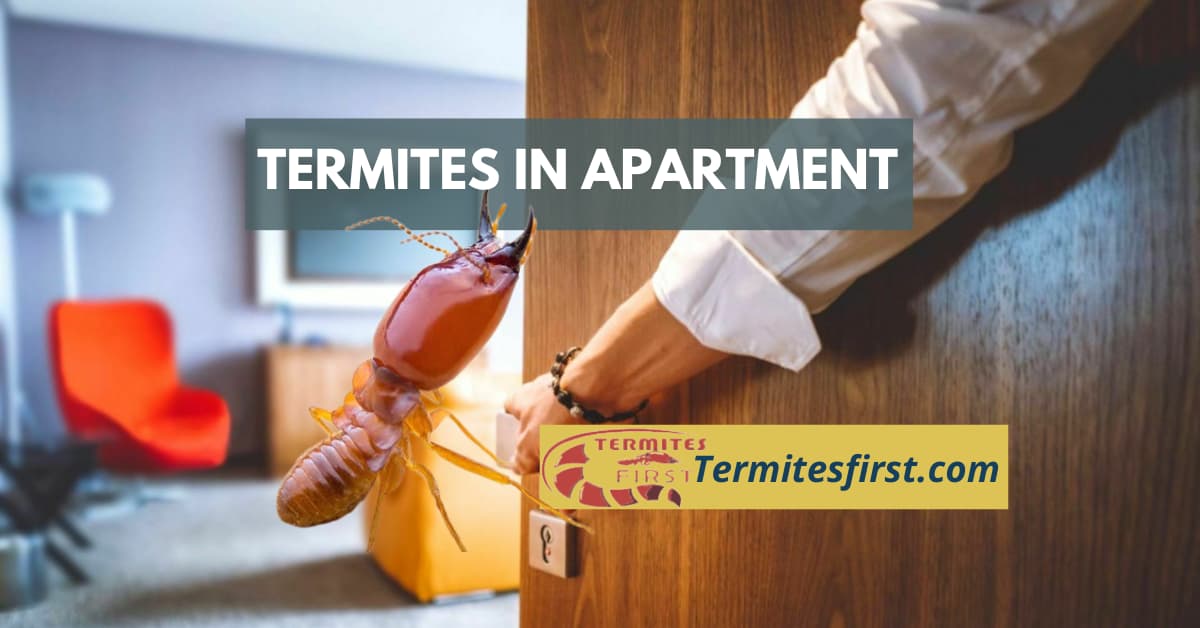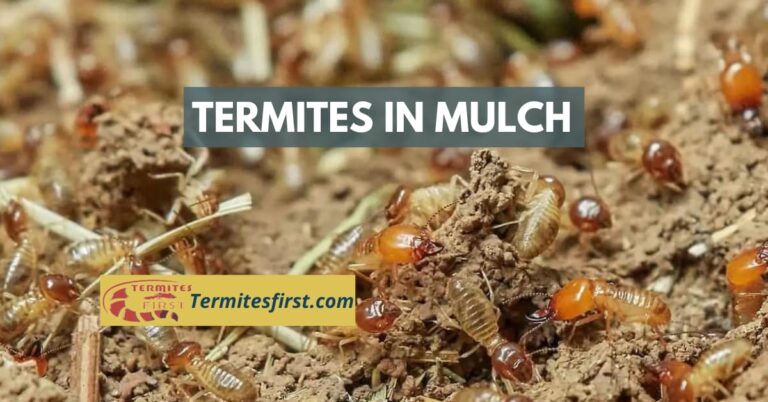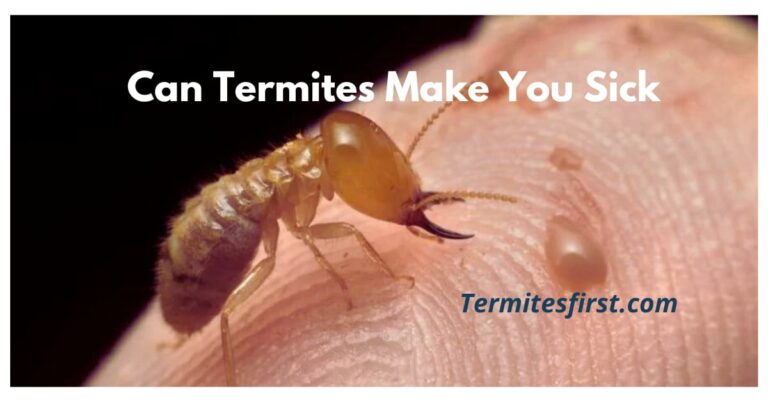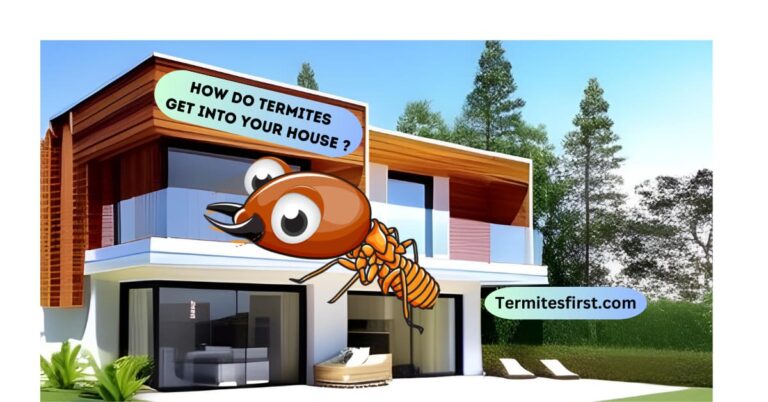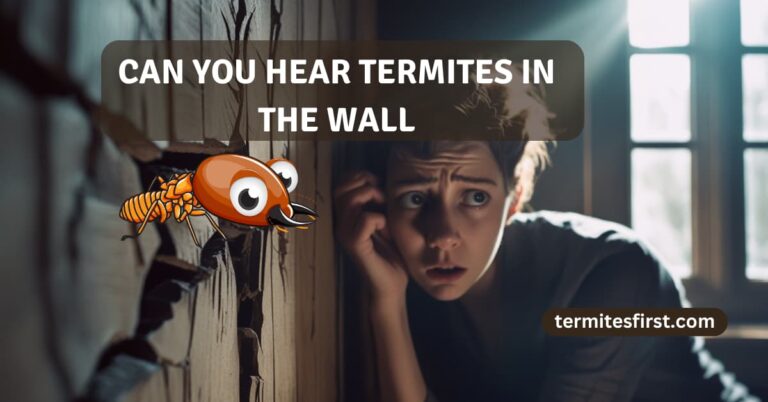Termites in Apartment: Key Signs of Infestation to Spot
Termites in apartment can be a serious issue that many residents may not even be aware of until it’s too late. These silent destroyers can wreak havoc on the structure of a building, causing costly damage and potentially putting the safety of occupants at risk. Knowing the key signs of termite infestation is crucial in order to take swift action and prevent further damage. In this article, we will explore the common indicators of termite presence in apartments, helping you to spot the warning signs early and protect your living space.
Key Takeaways
- Be aware of the signs of termite infestation, such as flying termites, mud tubes, droppings, and damaged wood, to catch problems early.
- Understand your rights and responsibilities as a tenant or landlord regarding pest control, including flying termites, and maintenance.
- Regularly inspect your apartment for indicators of wood damage, which can signal flying termites and termite activity.
- Look for unusual paint or floor issues, as these may indicate hidden termite damage beneath the surface.
- Take proactive steps to prevent future infestations by sealing cracks and maintaining a dry environment.
- Educate yourself and your tenants about termite prevention strategies to create a pest-free living space.
Recognize Termite Infestation Signs
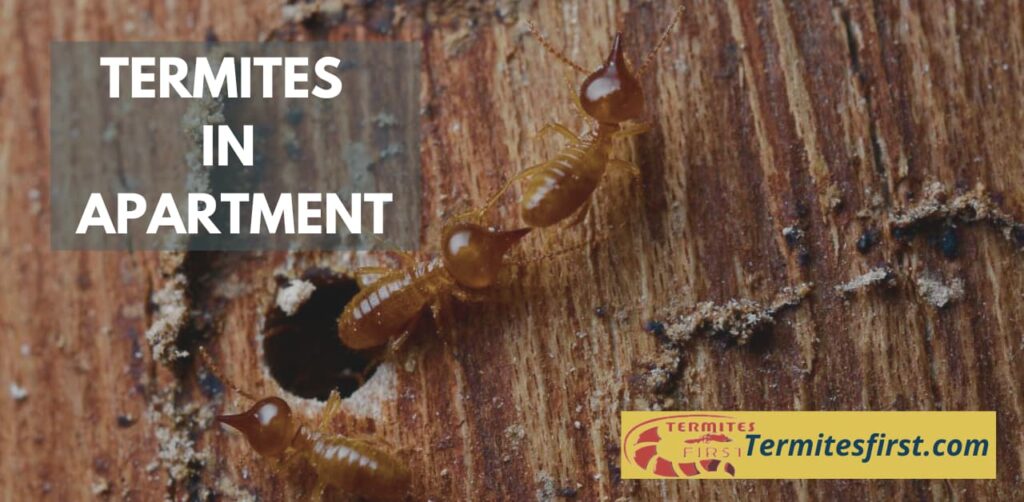
Visible Damage
Termite infestations often leave clear signs of damage. Look for hollowed wood in walls, floors, or furniture. This occurs when termites consume the cellulose material inside the wood. I once noticed this in my own apartment. A small area of my doorframe felt soft and crumbly. Upon inspection, I found it was damaged by termites.
Structural weaknesses can also indicate a potential termite problem. If you see sagging floors or walls, it may be time to investigate further. Termites can weaken the integrity of your home over time. This damage can be costly to repair.
Discarded Wings
Another sign of termite activity is discarded wings. After a swarm, termites shed their wings near windows or doors. These termite swarmers look for new places to colonize. Finding these wings means you might have a termite issue nearby.
I remember cleaning up after a storm and finding several tiny wings on my windowsill. It raised my concern about potential termite threats. This simple detail can alert you to a larger problem.
Unusual Sounds
Listen for unusual sounds within the walls of your apartment. Termites often make a clicking noise as they eat through wood. This sound may not be loud, but it’s distinct enough to notice if you’re attentive.
If you hear faint tapping or crunching noises, it could suggest termite presence. I’ve experienced this firsthand when I heard strange noises at night. It turned out to be termites actively feeding on the wooden beams in my building.
Termite Droppings
Termite droppings are another key indicator of an infestation. These droppings look like small pellets and are often found near infested areas. They indicate that termites have been actively feeding in your space.
Identifying these droppings early can help prevent further damage. If you find them, consider contacting a pest control expert immediately.
Regional Behavior
Understanding regional termite behavior is crucial for prevention. Different areas have varying risks associated with subterranean termite infestations. For example, warmer climates often see higher rates of termite activity.
Researching local termite risks can help you stay one step ahead. Knowledge about the types of termites in your region will guide your control efforts effectively.
Understand Landlord and Tenant Roles
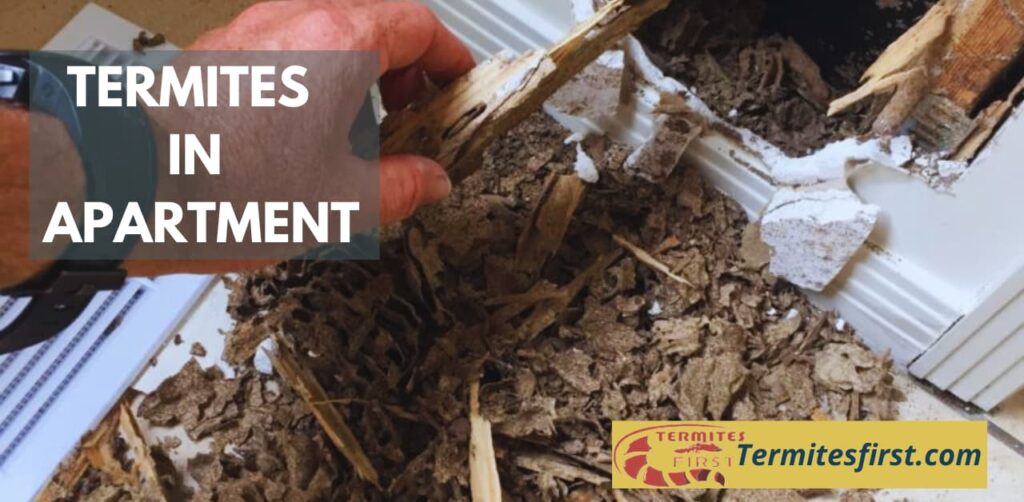
Landlord Responsibilities
Landlords hold the primary responsibility for pest control in their properties. They must ensure that apartments are safe and livable. This includes addressing infestations like termites. Many states require landlords to act promptly when tenants report pest issues.
Licensed exterminators often handle these treatments. I have seen how effective professionals can be in eliminating pests quickly. They use specific methods and products that are not available to the average person. This expertise is crucial in managing serious infestations.
Extermination Process
The extermination process varies by infestation type. For termites, it usually involves inspection, treatment, and follow-up checks. A thorough inspection identifies the extent of the problem. After that, exterminators apply targeted treatments. These may include liquid pesticides or bait systems.
Follow-up checks are essential to ensure effectiveness. Pest issues can return if not handled properly. I recommend keeping communication open with your landlord during this time. It helps to stay informed about what steps are being taken.
Tenant Rights
Tenants have specific rights regarding living conditions during pest control procedures. If an apartment becomes uninhabitable due to an infestation, tenants may seek compensation. This could include a reduction in rent or reimbursement for temporary housing.
Tenants should document any issues they face during this process. Keeping records of communications with landlords is helpful. This information can support claims if disputes arise later.
Communication Importance
Effective communication between landlords and tenants is vital during pest control situations. Tenants should report infestations immediately to avoid further damage. Landlords must respond quickly to these reports.
Open dialogue fosters a better relationship between both parties. It ensures everyone understands their roles and responsibilities clearly. I believe that when both sides work together, solutions come faster.
Legal Considerations
Many states have laws governing landlord-tenant relationships related to pest control. Understanding these laws can empower tenants in dealing with infestations. Knowing your rights helps you advocate for yourself effectively.
Researching local regulations can provide clarity on what landlords are obligated to do. It also outlines tenant rights regarding compensation and repairs.
Identify Damaged Wood Indicators
Soft Spots
I often check wooden structures for soft spots. These areas feel spongy or weak. They are a clear sign of termite damage. Termites eat wood from the inside out, leaving a thin layer on the surface. This can lead to crumbling surfaces. If you notice any soft spots, it’s essential to investigate further.
Termite damage can occur in various areas within your apartment. You might find signs of infestation in places like door frames, floorboards, and beams. If you notice these spots feel soft or give way when you press on them, it could indicate termite activity. A simple way to check is by using a flathead screwdriver to poke at these areas. If the screwdriver easily sinks into the wood, it’s crucial to take immediate action.
Small Holes
Look for small holes in the wood as another indicator of infestation. These holes are often about the size of a pencil tip. They are entry or exit points for termites. I once found tiny holes in my apartment’s wooden window frame. It was alarming to realize they had been living there unnoticed.
The presence of these holes suggests an active colony nearby. You might also notice sawdust around these openings. This is called frass, which termites leave behind as they tunnel through the wood. Regular checks can help catch infestations early before significant damage occurs.
Discoloration and Warping
Discoloration or warping in wooden elements is another sign to watch for. Warped wood may appear bent or twisted, which affects its structural integrity. Discoloration can manifest as dark spots or stains on the surface of the wood. I’ve seen this happen in older apartments where moisture and termites coexist.
These changes often indicate that moisture is present, making wood more appealing to termites. When you see warped boards or unusual stains, investigate further. Look closely at baseboards, furniture, and cabinets for signs of damage.
Spot Mud Tubes and Droppings
Termite Mud Tubes
I often check for termite mud tubes in my apartment. These are small, pencil-sized tunnels made of soil, wood, and saliva. Subterranean critters build these tubes to travel between their nests and food sources.
Finding these tubes is crucial. They usually appear along walls or foundations. If you see them, it indicates an active infestation. I once found a tube near my bathroom wall. It was alarming but helped me take action quickly.
Identifying Frass
Another sign of termites is frass. This is the term for tiny wood pellets left behind by feeding termites. I learned that frass can look like sawdust or small grains. When I discovered frass under my kitchen cabinets, I knew something was wrong.
Collecting frass helps identify the type of termite present. Drywood termites produce different droppings than subterranean ones. If you find frass, place it in a plastic bag for inspection. It’s vital to act fast if you suspect an infestation.
Investigating Debris
Look for unexplained piles of debris near wooden structures. These can be signs of termite activity as well. In my experience, debris often collects around baseboards or window frames. It might contain wood particles or even dead insects.
Investigating these areas can reveal more about the problem. Check your apartment regularly for any unusual debris. Early detection can prevent severe damage to your home.
Long Beach Concerns
In areas like Long Beach, termite infestations are common due to the warm climate. The dry environments create perfect conditions for these pests to thrive. Residents should remain vigilant.
I have friends in Long Beach who faced significant damage from termites. Their experience taught me the importance of regular inspections. Being proactive can save time and money in the long run.
Home Protection Tips
To protect your home from termites, keep wood away from soil contact. Also, ensure proper drainage around your foundation. Moisture attracts these pests, so fixing leaks is crucial.
Consider using barriers like steel mesh or chemical treatments as preventative measures. Regular inspections by professionals also help keep your home safe from infestations.
Detect Paint and Floor Issues
Inspect Paint
Inspecting paint is crucial. Look for bubbling or peeling paint. These signs often indicate moisture issues. Moisture can attract termites, leading to potential damage. I once noticed bubbling paint in my apartment. It turned out to be a sign of water leaks. Addressing it early prevented further damage.
Check the walls and ceilings carefully. If you see these paint issues, act quickly. Repair any leaks first. Then, repaint the affected areas to prevent future problems.
Assess Floors
Assessing floors is equally important. Sagging or uneven floors suggest underlying structural issues. These might be caused by termite damage or moisture problems. I remember walking on a floor that felt off-balance. It made me realize how important this check is.
Pay attention to how your floors feel underfoot. If they feel soft or spongy, investigate further. This could mean serious damage underneath.
Monitor Cracks
Monitoring cracks in flooring is essential too. Cracks may reveal hidden termite pathways. Termites often travel through small openings in search of wood. I found cracks in my own floorboards once and suspected termites immediately.
Look for cracks near walls or corners of rooms. Measure their size and depth. Small cracks can be normal, but larger ones are concerning. They may need professional assessment.
Take Action
Taking action is vital when you notice these signs. Contact a pest control expert if you suspect termites are present. They can provide a thorough inspection and treatment options.
Regular maintenance helps prevent infestations. Keep an eye on your apartment’s structure and surfaces. Early detection saves money in the long run.
Prevent Future Infestations
Regular Inspections
Implementing regular inspections of the property is crucial. I suggest scheduling these checks at least twice a year. This helps to catch early signs of termites before they cause significant damage. Look for mud tubes, discarded wings, or hollow-sounding wood. These indicators can signal an infestation. Early detection can save time and money in repairs.
Homeowners should also consider hiring professionals for thorough inspections. They have the expertise to identify hidden issues. In my experience, a professional inspection revealed termite activity that I had overlooked. This early action prevented further damage.
Maintain Dry Conditions
Maintaining dry conditions around the building is essential to deter termites. Termites thrive in moist environments. Remove any standing water near the foundation. Check for leaks in plumbing and fix them promptly.
I found that clearing gutters and downspouts regularly made a big difference. It reduced moisture buildup near my apartment’s foundation. Ensure that landscaping does not trap water next to the building. Keep mulch and soil away from wooden structures to minimize risk.
Proper Drainage Systems
Proper drainage systems are vital for preventing water accumulation near foundations. Ensure that your property has functional gutters and downspouts. They should direct water away from the building effectively.
Consider installing French drains if water pooling is an issue. These systems help channel excess water away from foundations, reducing termite attraction. My neighbor faced serious issues due to poor drainage, leading to an infestation in their basement.
Seasonal Swarms
Be aware of seasonal swarms as they often indicate potential infestations nearby. Swarming usually occurs in the spring and summer months when temperatures rise. During this time, winged termites leave their colonies to mate and establish new colonies.
If you notice swarming termites around your apartment, take immediate action. Inspect your home for any signs of termite activity. I learned this lesson after witnessing a swarm near my window last summer. It prompted me to check my property thoroughly.
Questions to Consider
When dealing with termites, ask yourself important questions. Do you know the signs of an infestation? Have you inspected your property recently? Understanding these aspects can help you stay ahead of potential problems.
I often remind myself about the importance of being proactive rather than reactive with pest control measures. Taking small steps now can prevent larger issues later on.
Educate Tenants on Prevention
Seasonal Activity
Termite activity peaks during warmer months. This usually occurs from late spring through early fall. In these months, termites search for food and moisture more actively. I remember seeing signs of termites in my own apartment during summer. It was alarming to discover their presence when the weather warmed up.
Tenants should be aware of this seasonal pattern. They need to remain vigilant during these months. Increased awareness can help catch potential infestations early. Keeping an eye out for signs of termites is crucial. These include mud tubes, discarded wings, and hollow-sounding wood.
Report Issues Promptly
Moisture problems attract termites. Leaks in pipes or roofs create ideal conditions for them. Tenants should report any leaks immediately. Quick action can prevent serious damage to apartments.
I once lived in a large apartment complex where a small leak turned into a big problem. The delay in reporting allowed termites to invade nearby units. It’s important to communicate with property management about any water issues.
Landlords often provide maintenance services for repairs. Timely reporting helps maintain the integrity of the entire apartment complex. Vigilance from tenants supports a healthier living environment for everyone.
Identify Characteristics
Understanding termite characteristics helps tenants recognize infestations early. Termites are often mistaken for ants due to their similar appearance. However, they have straight antennae and a broad waist, unlike ants.
Resources are available to help identify these pests. Online guides and local pest control websites offer detailed information. Many apartment complexes also provide educational materials on pest prevention.
Signs of infestation include:
- Mud tubes on walls
- Swarmers (winged termites) around windows
- Hollow-sounding wood when tapped
Recognizing these signs is essential for tenants. Reporting them can lead to quick action by property management.
Manage Pest Control Duties
Communication Channels
Clear communication is essential in managing pest issues. Tenants should report any signs of termites or other pests immediately. Property management must respond promptly to these reports. I believe that having a dedicated platform for communication can help streamline this process. For instance, using an online portal can allow tenants to submit complaints easily and track their status.
Regular updates from management about pest control efforts are also important. This keeps everyone informed and reassured. Transparency builds trust between tenants and management. It shows that management takes pest control seriously.
Regular Treatments
Scheduling regular pest control treatments is crucial for maintaining a termite-free environment. Experts recommend quarterly inspections and treatments as a best practice. These proactive measures can prevent infestations before they start. I once lived in an apartment where regular treatments made a significant difference. We rarely saw any pests after the first few months of consistent care.
Choosing a reputable pest control service is vital. They should use safe and effective methods to eliminate termites without harming residents or pets. Management should document all treatments conducted, including dates and specific actions taken. This information can be useful for future reference.
Documentation
Documenting all pest control actions ensures accountability and transparency. Keeping records helps track the effectiveness of treatments over time. It also provides evidence if issues arise later on. For example, if a tenant reports ongoing problems, management can review past actions to identify gaps.
Management should maintain detailed logs of inspections, treatments, and tenant complaints. This documentation can help in assessing trends related to pest issues within the building. I find that having these records readily available makes it easier to address concerns quickly.
Tenant Education
Educating tenants about their role is key in managing pest issues effectively. They should understand how to spot signs of termite activity early on. This includes looking for mud tubes, discarded wings, or damaged wood.
Providing resources such as pamphlets or workshops can empower tenants to take action when needed. Encouraging them to keep their living spaces clean also plays a role in prevention. A clean environment reduces food sources for pests.
Conclusion:-
Dealing with termites in an apartment can be a real headache. I’ve covered the signs to watch for and the roles of landlords and tenants. Knowing how to spot damage and prevent future infestations is crucial. It’s not just about fixing problems; it’s about keeping your home safe and sound.
Now that you’re armed with this knowledge, take action. Check your living space for those pesky signs and communicate with your landlord or neighbors. Staying informed is your best defense against termites. Don’t wait until it’s too late—be proactive and protect your home today!
FAQ’s:-
Common signs include mud tubes on walls, discarded wings, and hollow-sounding wood. You may also notice droppings resembling sawdust. Regular inspections can help catch infestations early.
Typically, landlords are responsible for pest control issues, including termites. However, tenants should promptly report any signs of infestation to ensure timely action.
Look for soft or spongy areas in wooden structures. If you tap on wood and it sounds hollow, this could indicate termite damage. Regular checks can prevent further issues.
Mud tubes are tunnels created by termites to travel between their nest and food sources. Finding these tubes is a clear sign of an infestation and requires immediate attention.
Yes, peeling paint or warped floors can suggest moisture issues caused by termites. Inspect these areas closely if you notice any unusual changes.
Maintain low humidity levels, fix leaks promptly, and remove wood debris from around your apartment. Regular inspections by professionals can also help deter infestations.
Inform them about reporting signs of infestation early, maintaining cleanliness, and avoiding wood-to-soil contact. Awareness helps in preventing serious infestations and damages.

